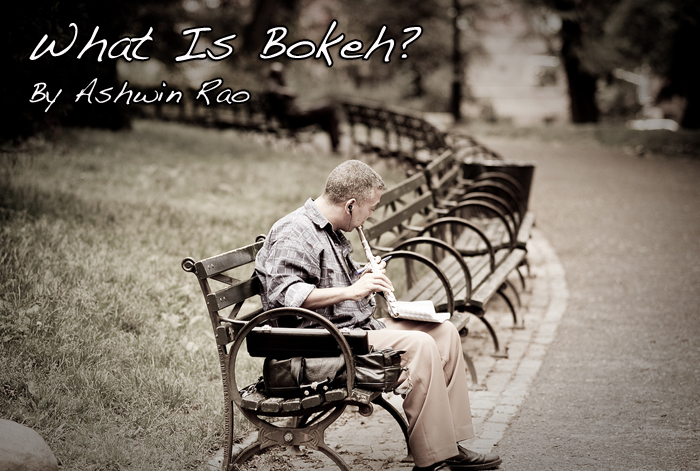
Hi everyone, it’s good to be back with all of you! In browsing here daily, I see that many of you are new to photography or the rangefinder experience. I love how Steve’s reviews and articles have attracted many new photographers and old photographers alike into a lively discussion where everything is fresh and valid. Steve has a real talent for this type of discourse, and his excitement and enthusiasm are infectious.
Given that some of you are relatively new to photography, there are many topics that are novel, and some concepts may be misunderstood. We all want to learn as much as possible, as fast as possible, to become the best possible photographers, right?!? Yeah! But there is so much to learn, so why not start here. Today, I will delve a discussion of bokeh, the often discussed and often misunderstood topic of photography that generates so much heated debate and so much buzz. What is it? Where did the term come from? How should I evaluate bokeh? Does it matter? Are Leica lenses any good in the bokeh department? Rest assured, all questions will be answered.
The Leica 75 Summilux 1.4
Simply stated, bokeh is defined as the quality of the out-of-focus parts of a photograph. In fact, Wikipedia, the internet’s answer to The Encyclopedia Brittanica, defines Bokeh as follows:
“In photographic terms, bokeh is the blur, or aesthetic quality of the blur, in out-of-focus areas of an image, or he way the lens renders out-of-focus points of light”
But there is so much more to it, and this is why I want to speak about it a bit more.
Different lenses render bokeh in different ways, and there are many ongoing debates about which lenses produce the best bokeh. Much of how a lens renders its out-of-focus elements has to do with its inherent aberrations. Some of these aberrations may allow a lens to produce aesthetically pleasing bokeh, while others may cause a lens to render harshly. Furthermore, some individuals may consider a particular lens’ bokeh to be desirable, while others may consider the same lens’ bokeh to be harsh. Beauty, in fact, may be in the eye of the beholder when it comes to interpreting bokeh. We’ll get into some of that controversy soon, and I’ll even provide a list of some lenses that are considered to have the best bokeh across camera systems.
I suspect that this article may generate a bit of discussion, and that’s what I want, because there are so many misrepresentations and misunderstandings of this topic. Hopefully, we can all find some clarity within the discussion and further our understanding of this topic.
Leica 50 Summilux 1.4 Pre-Asph
History of the Term “Bokeh”
So you may ask: How did such an unusual word, “Bokeh” come to describe the quality of an image’s out of focus area. Well, good question! It turns out that bokeh is coined from the Japanese word “boke” and “boke-aji”, which roughly translate to “fuzzy” and “flavor of blur”, respectively. The term was adopted into the English photographic lexicon by Mike Johnston, who currently runs the Online Photographer blog and was previously editor-in-chief for “Photo Techniques” Magazine in the late 1990’s. To give credit where credit is due, Johnston first learned of the term “bo-ke” from Oren Grad, a guy who has multiple graduate degrees (MD’s, PhD’s, and several masters degrees…a genius of sorts) and purportedly learned Japanese just to be able to read Japanese photo magazines! Awesome! The term boke-aji had already been used for some time in Japanese magazines in describing an image’s out-of-focus qualities. In reality, the term bokeh does not translate literally into one meaning in English. In the Japanese literature, there are many shades of the meaning of bokeh, but all boil down to some version of “blur quality.” Johnston was ultimately responsible changing the spelling from “boke” to bokeh to address proper pronunciation, and he popularized the term through a series of 3 commissioned articles on the topic, which were published in March and April 1997 issues of “Photo Techniques”. It was stressed that pronunciation was “bo” as in bone and “ke” as in Kenneth. So that’s how you say it.
I recently had the privilege of communicating with Mike Johnston in preparing to write this article. For those of you haven’t checked out his blog, it’s a great way to orient yourself on current topics and movements in photography. Mike’s blog includes wide ranging topics spanning product reviews to photographic philosophy to photography features…kind of like Steve’s site, but with a different flavor. Interestingly, Johnston has been keeping track of the popularity of the word through Google lexicon searches. The number of hits that come up on a web search has increased from 15 in 1997 to now more than 3.4 MILLION in 2010! Whoah! How’s that for popularizing a term! Kudos to Mike!
Johnston was also responsible for popularizing the term “Bokeh King” to describe the Leica 35 mm f/2 Summicron Pre-Asph v.4 (version 4 of this lens), which was produced by Leica until the late 1990’s. This lens has since been replaced in the Leica lens lineup by the current Leica Summicron 35 mm f/2.0 Aspherical, which by all reports has slightly less desireable bokeh but is notably sharper and better-corrected for aberrations. The version 4 “Bokeh King” Summicron is widely considered the lens that creates the best bokeh of them all! In homage to Lord of the Rings, it’s the “one lens to rule them all”….More on this later, since the title of king of bokeh is up for grabs, and for many, the 35 mm Summicron bokeh king is no longer king.
Leica 50 Noctilux F1
Just to add controversy and stir the pot, Johnston mentioned to me that in general, the Leica lens line-up is not particularly good for bokeh! Quoting from his email, Leica lenses “clearly aren’t designed with out-of-focus characteristics taken into account and there is no consistency to their look. Zeiss lenses are typically even worse. There are always exceptions, however, as it’s always a case-by-case (and picture-by-picture) thing”.
However, Johnston stressed to me, and I agree based on personal experience, that it’s best not to dwell too much on this. Depending on the proper circumstances of light and background busy-ness, it’s possible to generate pleasing bokeh out of most any lens….but still, Leica and Zeiss lenses are bad for bokeh? Ouch! I think my wallet and ego just tool a substantial bruising! Per Johnston, the discontinued line of Minolta lenses and Bronica medium format lenses produce the best bokeh. Problem is, neither of these lines of lenses are even produced any more!
For those of your micro 4/3 freaks, Johnston does agree with me on one point: The bokeh of the Panasonic 20 mm f/1.7 lens is pleasing! Kudos for Panasonic getting it right for the m4/3 contingent! (From Steve: I agree!)
Leica 35 Summaron F2.8
The nitty gritty of bokeh (i.e. TECHNOBABBLE)
H how is bokeh rendered? Why does one lens have a different look than another lens? Basically, bokeh is the byproduct of a lens’ various properties, including aperture, focal length, near focus/macro qualifications, and its aberrations.
Good bokeh is particularly important for larger aperture lenses, macro lenses, and long telephoto lenses, all of which seek to obtain shallow depth of field to achieve out-of-focus backgrounds to make a subject pop and stand out.
Getting beyond the above parameters, which primarily define a lenses ability to generate narrow depth of field, there are several other factors that affect the quality of bokeh. One must examine the image’s circle of confusion, in which a sourced point of light becomes an image of the aperture, which is generally rendered as a round disc. Depending on how well a lens is corrected for spherical aberration, these discs of light may be uniformly bright (idea) or bright either at the center or edge. Lenses that are poorly corrected will additionally show different kinds of out-of-focus highlights depending on the plane of focus. What’s interesting is that lenses made by Canon, Nikon, and Sony have adjustments to deal for this type of aberration, while Leica lenses, particularly older lenses, often do not. The irony is that these aberrations may be desirable for image quality, given particular light fall off properties of these aberrant out-of-focus lights towards the edges of the image, which produce less defined shapes that blur better into the background.
The Canon 135L F2
Bokeh may be also affected by the shape of the aperture opening, which is in turn a property of the number of aperture blades as well as the shape of the aperture blades themselves. Thus, at wide open aperture, you may notice that out-of focus highlights can appear polygonal. Thus a lens with a 6 blade aperture will demonstrate hexagonal highlights in its bokeh. In the old days, lenses avoided these geometic out-of-focus highlights by increasing the number of aperture blades. In fact, many old Leica lenses have more than 10 aperture blades, and it is though that that this number of blades results in many positive qualities for the bokeh of these older Leica heritage lenses. Modern lenses often compensate for lower aperture blade counts by changing the shape of each blade to render more circular out-of-focus highlights.
Testing bokeh…Controversy, Controversy, Controversy
Some vocal photographers would have you believe that the best way to evaluate bokeh is shooting a lens wide open, that is, at its widest aperture. It turns out that this is DEAD WRONG. While wide aperture lenses throw the background out of focus, it is also the widest of apertures that reveal most of a lens’ problematic aberrations, making bokeh hard to evaluate in this circumstance. In my correspondence with Mike Johnston, he mentioned that the “bokeh king” Summicron actually has rather bad bokeh when shot wide open at f/2.0. Per Johnston, it takes stopping down the lens a bit to reveal the lens’ inherently beautiful bokeh and gentle transitions in out-of-focus rendering. Thus, it may be best to shoot the bokeh king at f/4 to f/5.6 to reveal its charms, NOT f/2!
Canon EF 50 1.4
Bokeh quality tends to break down in several circumstances. Not only is wider aperture a problem, but so are harshly lit, contrasty backgrounds (for example, light shining through the leaves of a tree as background to a portrait). Bokeh also seems to break down at close focus distances and when there’s a large foreground-background separation. What these rules essentially dictate is that if you wish to avoid distracting or unsightly bokeh, you should shoot with your lens slightly stopped down, while keeping focus at moderate distances, and while avoiding high contrast backgrounds. This advice is clearly delineated in Mike Johnston’s bokeh ratings pdf document, which is available freely online.
A word on the bokeh of Leica lenses
So what’s the deal with Leica lenses? They cost a king’s ransom. Shouldn’t they exhibit the best out-of-focus qualities? To my eyes, they do a good job, though others may feel differently. Modern Leica lenses incorporate one or more aspherical elements. These elements optimize these lenses’ sharpness and microcontrast, and as you all know, Leica lenses are renowned for their sharpness. Even wide open, lenses from the Canon L series and Nikon FX lenses break down in terms of sharpness, but nearly all modern Leica lenses remain tack-sharp. The issue with aspherical elements is that they render more abrupt transitions from focused areas to out-of focus areas. These abrupt transitions in focused AND out-of-focus photographic zones can also make background blur seem harsher and a bit more geometric.
So how does one get around this issue? Well, one way is to invest in older Leica lenses. Many older lenses, such as the 75 mm f/1.4 Summilux, the 50 mm Noctilux f/1.0, and the 35 mm Summilux Pre-Asph, are renowned for their bokeh and their “Leica Look”. Many photographers describe the “Leica Glow” of these older lenses, and some lament that modern Leica aspherical designs seem to lack this characteristic. Remember that these older Leica lenses do not contain aspherical elements, and hence, transitions from focus to out-of-focus regions of the images captured by these lenses are more gentle. The bokeh transitions are also gentler, and it is some the other spherical aberrations the lend themselves to the glow-like casts that these lenses generate. In these cases, all of theses’ lenses have aberrations that may in fact be desirable. When shot wide open, legendary lenses like the Noctilux and 75 Summilux can have harsh appearing, distracting bokeh. But they also have other aberrations that many photographers value. The bottom line is that it probably doesn’t matter that much to real world photography.
The Leica 50 Summilux 1.4 ASPH
What I find valuable about Leica lenses is their character. For me, bokeh is only one part of the picture. Equally important are microcontrast, flare control, edge-to-edge sharpness, and yes, that hard-to-define Leica glow. Maybe I am deluded, but I see it in modern Leica glass as well. To me, I look at images that come from my M lenses, and they just jump off the page far more than images shot with my other cameras. It’s the sum of all of the elements that makes Leica lenses great, not just their bokeh!
It’s all in the eye of the beholder
So you may ask the question, “Which lens should I buy if I want the absolute best bokeh?” Well, that’s a very difficult question to answer. Remember that in Japanese, the term “bo-ke” encompasses a wide variety of subtle variations of the blur concept. There’s no direct literal translation from Japanese to English that clearly encompasses all of “bo-ke”s Japanese derivations. Mike Johnston would argue, and I would concur, that it’s in the eye of the beholder. Ultimately, what’s pleasing to you, as a photographer and artist, is what is most important. While Mike may argue that the Voigtlander 40 mm f/1.4 Nokton has rather ugly blur, I know some very talented photographers for who describe this very lens as their favorite…go figure!
For all intents and purposes, there is really no such thing as “good” or “bad” bokeh.
And, now, to completely contradict myself….BOKEH RATINGS
Rememeber, I just told you that there’s no such things as good or bad bokeh. BUT, as we live in a world where everything is rated on a scale of 1 to 10, I will present you with a list of lenses which I think have great bokeh, based on my personal experience and from that collated from my years of my own endless quest for “good bokeh” lenses. Keep in mind that most lenses are capable of achieving excellent results in the bokeh department, but seem to achieve it more readily than others.
DISCLOSURE: By no means am I a lens tester. For a more detailed and scientifically rigorous approach to lens ratings, I would refer you to Mike Johnston’s PDF on Lens Ratings.
Without further adieu, here are my lens bokeh ratings, based on my own experience and biases (Sorry to you Nikonians, as I have never owned a Nikon and haven’t tried out any lenses):
Bokeh Rating scale: 1-5
1: Horrible, harsh ugly, gross,vomit-inducing yick…. Stay away bokeh
2. Mediocre at best, typically harsh and undesireable bokeh
3. Average performer, entirely useable in most cirmustances.
4. Top-notch performer, capable of occasional magical bokeh
5. Consistently splendid performer, capable of typically awesome results
Wide angle (note that bokeh is hard to achieve for 24 mm and wider lenses)
Canon EF 15 mm f/2.8 Fisheye –
Leica 16-18-21 f/4.0 Tri-Elmar (WATE) 3
Leica 21 mm f/1.4 Summilux Asph 3
Leica 21 mm f/2.8 Elmarit pre-asph 3.5
Leica 21 mm f/2.8 Elmarit asph 3
Voigtlander 21 mm f/4 Color-Skopar 3
Canon EF 24 mm f/1.4 L 3.5
Leica 24 mm f/1.4 Summilux Asph 5
Leica 24 mm f/2.8 Elmarit Asph 4
Zeiss 25 mm f/2.8 Biogon 3.5
Leica 28 mm f/2.8 Elmarit Pre-Asph v.4 4
Leica 28 mm f/2.8 Elmarit Asph 3
Leica 28 mm f/2.0 Summicron Asph 4
Voigtlander 28 mm f/3.5 Color-Skopar 4
Wide-Normal
Canon EF 35 mm f/1.4 L 4.5
Leica 35 Summicron f/2.0 Pre-Asph v.4 bokeh king 4.5
Leica 35 mm f/2.8 Summaron 3
Leica 35 mm f/2.0 Summicron Asph 3.5
Leica 35 mm f/2.5 Summarit 5
Leica 35 mm f/1.4 Summilux Asph 5
Leica 35 mm f/1.4 Summilux Pre-Asph 3.5
Voigtlander 35 mm f/1.2 Nokton 2.5
Panasonic 20 mm f/1.7 lens (micro 4/3) 4
Normal
Canon EF 50 mm f/1.8 2.5
Canon EF 50 mm f/1.4 EOS 5
Canon EF 50 mm f/1.2 L 4.5
Leitz Summar 50 mm f/2.0 screw mount 2
Leica Collapsible Elmar 50 mm f/2.8 (last version) 3
Leica Collapsible Elmar 50 mm f/2.8 (early version) 3.5
Leica Summicron 50 mm f/2.0 3
Leica Summilux 50 mm f/1.4 Asph 4
Leica Summilux 50 mm f/1.4 Pre-Asph 4.5
Leica Noctilux 50 mm f/1.0 Pre-Asph 5
Canon 50 mm f/0.95 (for Canon 7 RF) Modified for M mount 4
Telephoto
Leica 75 mm f/2.0 Summarit 4
Leica 75 mm f/2.0 APO-Summicron 4.5
Leica 75 mm f/1.4 Summilux 5
Canon 85 mm f/1.2 L Mark II 5
Leica 90 mm f/2.8 Elmarit (last version) 3.5 Leica 90 mm f/2.8 Thin Tele-Elmarit 2.5
Leica 90 mm f/2.0 Summicron pre-Asph 4
Leica 90 mm f/2.0 APO-Summicron Asph 3.5
Canon EF 100 mm f/2.8 macro 4.5
Canon EF 135 mm f/2 L 5
Leica 135 mm f/4 Tele-elmar 4.5
Canon EF 70-200 mm f/2.8 L Mk I 4
Canon EF 300 mm f/2.8 L 5
Canon EF 300 mm f/4.0 L 3
Canon EF 400 mm f/5.6 L 3.5
Note that this is in no ways a comprehensive list of lenses, but simply a sampling of lenses that I have either tried, owned, or evaluated. Furthermore, this is not a rating of how I feel about the lens overall, but rather, how I feel about it’s out-of-focus rendering.
Canon 85L
AND THE NEW KING OF BOKEH IS….
From my experience and what I have seen, the Leica Summarit 35 mm f/2.5 takes the cake. This lens is desireable on many accounts. It passes the ugly test of shooting a subject with harsh background very well, especially for a wider lens. It is an imminently useable and compact lens for the M rangefinder system, with a wide-enough aperture, very compact dimensions, and unsurpassed IQ. It does not have aspherical elements, so it renders more naturally and softly than its 35 mm Summicron Asph cousin. Of added benefit, this is one of Leica’s most affordable lenses! A top performer, at a reasonable price, in compact dimensions, with great bokeh! Hard to beat…I only wish that I had one.
Contenders for the award, despite their flaws, are the Summilux 35 mm f/1.4 asph, Noctilux f/1, and Summilux 75 mm f/1.4. They all have their issues, but to be honest, they win the artistic award for most unique bokeh!
And if you are wondering, after all of this, what is Ashwin’s favorite lens, that award goes to the Leica Summilux 35 mm f/1.4 ASPH. To me, it’s the best combination of many factors, including sharpness, bokeh, usefulness, and that Leica look.
BEST BOKEH BANG FOR THE BUCK:
Leica M system: Leica Summarit 35 mm f2.5, Leica Tele-Elmar 135 f/4
Canon EOS system: Canon EF 50 mm f/1.4
Micro 4/3: Panasonic 20 mm f/1.7
You can see more of Ashwins work at his cool blog HERE or his Flickr page HERE!
From Steve: Thanks Ashwin for this very cool article. I found it very informative and agree with *most* of your ratings. I am sure others will have a few things to say about your new “King Of Bokeh” but I wanted to add that I own this lens and while I have mainly been shooting with a 50, the Bokeh of the 35 Summarit is very nice. Every time I shoot it I am always smiling when I sit down to look over the images captured with it. I I love mine to death. Truth be told, it seems to have a little bit more “character” than the cron. I have no complaints and could recommend this lens to any Leica M shooter! BTW, this lens is available at this sites main sponsor B&H Photo at their 35 Summarit page. You can also read my 35 Summarit review HERE.
HELP SUPPORT THIS SITE TO KEEP IT GOING AND GROWING!
Remember, anytime you follow my links here and buy from B&H or AMAZON, this helps to keep my site going. If it was not for these links, there would be no way to fund this site, so I thank you in advance if you visit these links. I thank you more if you make a purchase! I have nifty search bars at the upper right of each page so you easily search for something at either store! I currently spend 14 hours a day working on this site and the only way that I can pay for it is with your help, so thank you!
If you enjoyed this article/review, feel free to leave a comment at the bottom of this page and also be sure to join me on twitter or facebook! Also, you can subscribe to my feed at my subscribe page HERE and read these posts in your browser or news reader! Also, interested in becoming a guest writer? Contact me! Thanks so much for visiting my site!

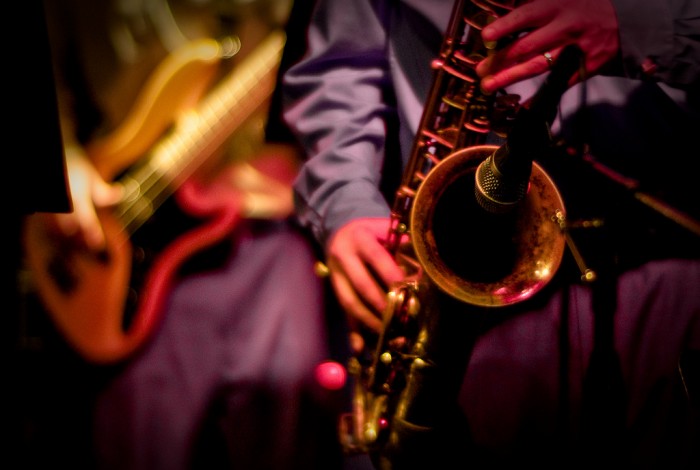
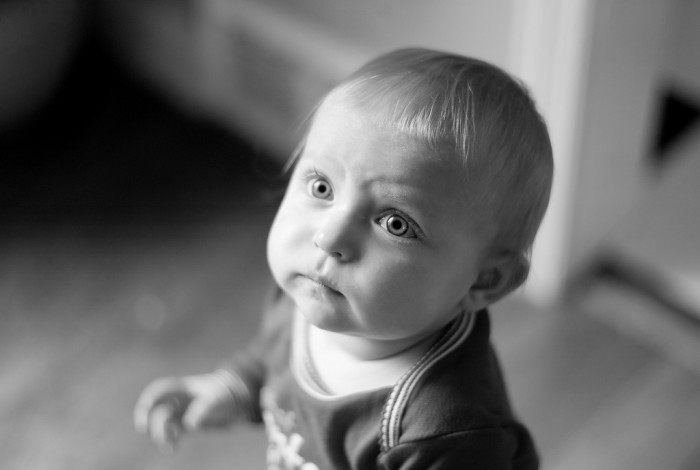
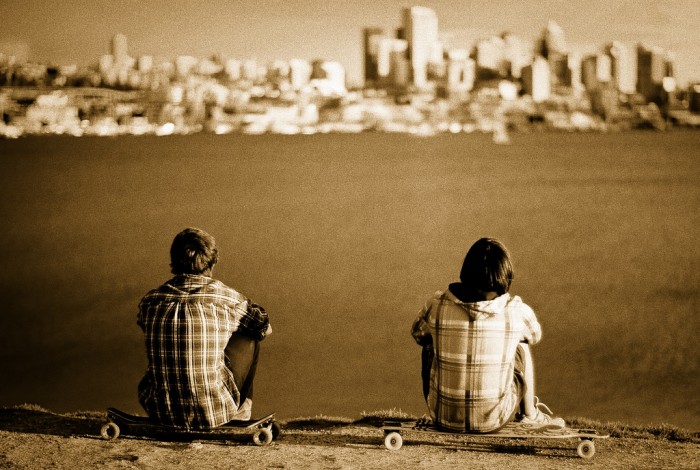
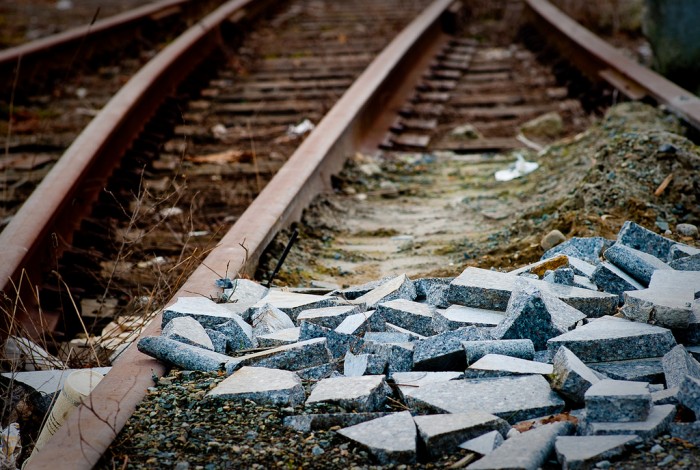
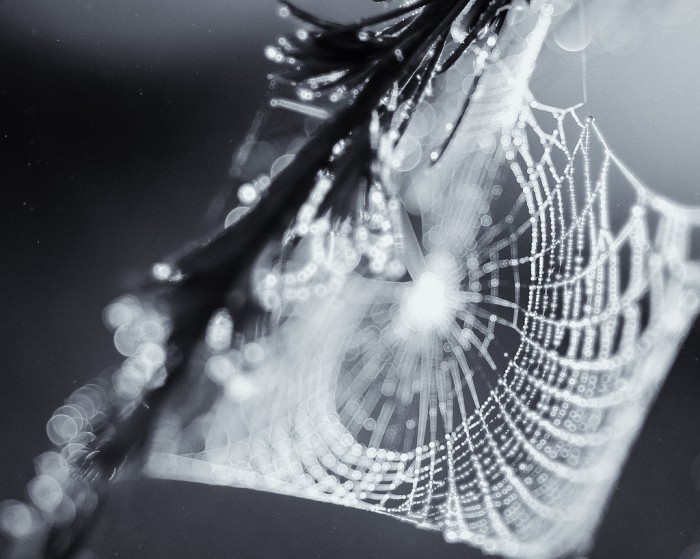
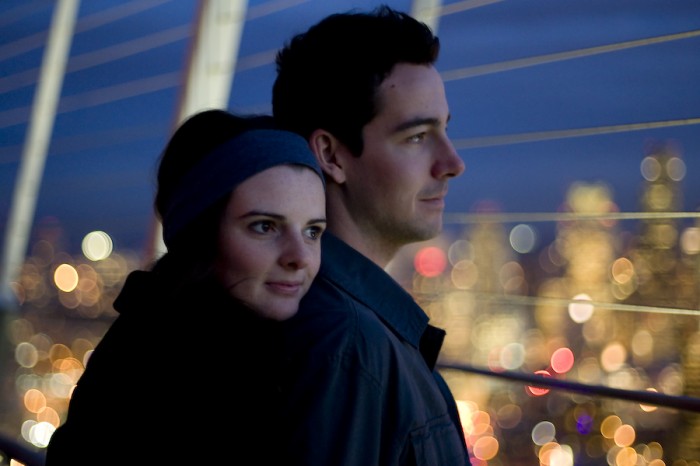
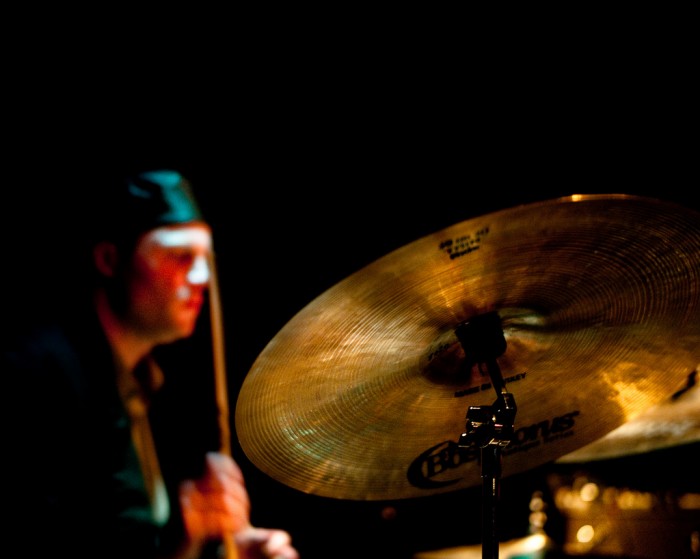
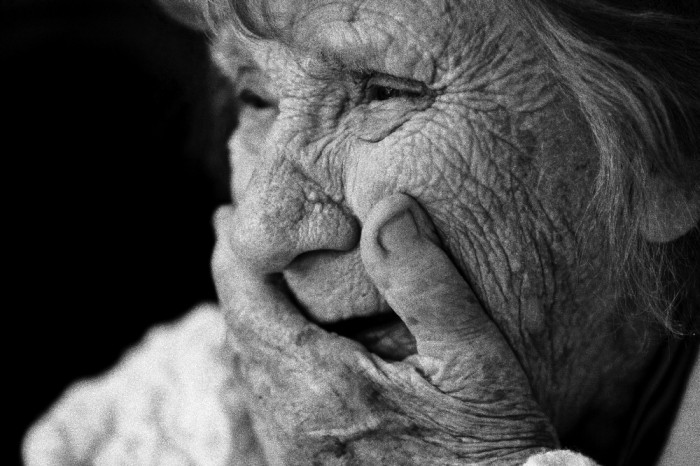

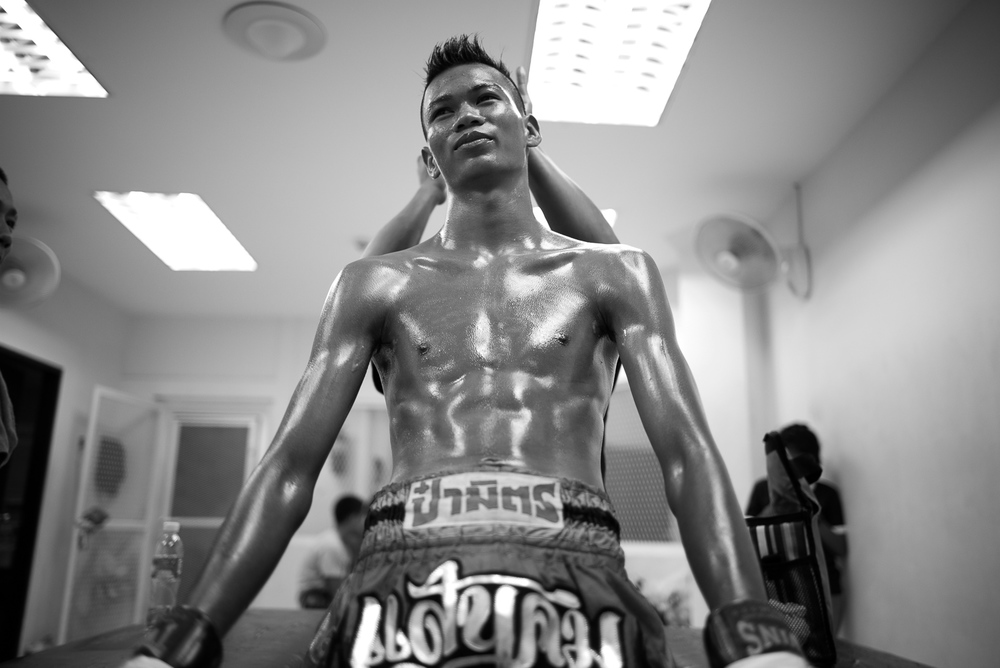


Canon EF 50mm f/1.4 got better bokeh than 50mm f/1.2L. You have no clue regarding Canon lenses.
I’ve heard similar comments about wine tasting notes from people who have no taste-buds and are un-aware of it.
My personal point of view is that the term is only created to give some glamour to the technique without giving to photography any real contribution.
Sorry but I find it difficult to believe that not one Nikon lens was mentioned.
All this comment and no-one mentions FSU lenses. I’d suggest folk get round the flea markets looking for Helios,Industar and Jupiter lenses. You could buy 50 different ones for the price of one Leica (and the bokeh’s better than almost all the above mentioned lenses).
Bob Smith
Thanks for the test and the information. A little hint though; In 1972 Leitz (now Leica) signed an technical cooperation agreement to jointly develop cameras but also lenses. A lot of the lenses used by Leica are designed by Minolta, Minolta also learned a lot from Leitz/Leica.
My point is if you haven’t tried some of the Minolta glass you have missed something. The 35-70mm zoom used by Leica was developed by Minolta and is optically the same as the Minolta zoom. The 90mm tele used by Leitz on the Leitz-Minolta CL or Leica CL is also much sought after by users who knows a thing or two about Minolta glass.
I find the Elmar-M has good, but less modelling wide open than the first Elmar. It also has higher contrast – so overall it’s a great choice for folks who shoot both BW and Colour in one go. But if you’re interested only in Monochrome than the v1 Elmar is the way to go.
A second consideration is that the new Elmar-M has 6 blades vs 15 curved blades of the 1957 Elmar. The result is that the 1957 Elmar has the same extraordinary modelling at all apertures, while the Elmar-M has artificial looking bokeh when stopped down. Also the Elmar-M has 6 stars on reflections, while the v1 Elmar sees light reflections in a similar way your eye does – as a bright glare without star – giving photos extra magic.
Having said all this, the Elmar-M is technically a better lens, sharper wide open, higher contrast and higher contrast – all things that do not make your photos better with B&W photography.
Hope this helps
Hi Mr.Vrakas,
I was wondering if the new Replica Elmar-M has the modelling property you mentioned above. Or is it limited to all those old lenses only?
Thanks in advance!
I would like to add two new dimensions to this (old) thread and discussion. The review of “bokeh” should be done separately for colour and b&w photography. It is a common error colour photographers make to assume that their lens-kit is any good for black and white photography. It is not. Rather I would advise they re-considered all their lenses from the beginning if venturing in serious B&W photography – and assume everything they know about which lenses are good to be irrelevant.
The second dimension of bokeh in black and white photography is called “modelling”. A term colour photographers and generally photographers under 70 years old are not aware of, because they know little about black and white lenses. The holy grail of B&W photography is not “bokeh”, but “bokeh modelling” – that is: the three dimensional rendering of out of focus objects as a result of structured (and not smooth) bokeh. The quality of modelling does not help the background dissapear into a smooth cream as in colour photography, but it disolves it into smooth, but eligible shadows, gently describing what was there before, informing the viewer of the background scene, while still helping isolate the subject of the photograph. In colour photography this effect is done through colours instead.
To summarise the goal of lenses designed before colour film was invented is not smooth bokeh – it is structured modelling – which is why Leica lenses before the 60s all render with strong modelling – not because Leica didn’t know what they were doing back then.
For examples of what I mean by this, look for photographs made by the Leica Elmar 50mm f/2.8, the Leica Summaron f/2.8, the Leica 35mm Summicron IV etc on flickr. In my view the Elmar 50 f/2.8 is one of the most extraordinary lenses for b&w photography (here rated 3). What I love about it is it’s outstanding bokeh modelling and incredible tone rendition (another concept colour photographers know little about).
Examples from other photographers:
https://www.flickr.com/photos/centir/11395274916/ Elmar
https://www.flickr.com/photos/sonicinfusion/6471421157/ Elmar
https://www.flickr.com/photos/jbiel/5534913352/ Elmar
https://www.flickr.com/photos/michael_sergio_barnes/8302021625/ Summaron
https://www.flickr.com/photos/chunyang/8700386699/ Summicron IV
With much love,
I’m sorry, but I just don’t get the idea of this post… I’m just supposed to take it at your word that the Summirait is the best Bokeh performer, without even one photo taken by it posted? You just gave us a list with a bunch of numbers… I’d rather see the photos you took to make those decisions.
Mhari – one cannot make a blanket statement of what constitutes an amateur effect. I would suggest goofy, one-touch photoshop filters, but would likely be wrong as there is surly an exception.
dude there is nothing wrong about only having one eye in focus, pull your head out of your arse, being technical without any artistry is gay.
penso che un buon sfocato lo ottengo con ottiche manuali e con un buon cavalletto;per me un buon sfuocato e’ quello del suonatore seduto sulla panchina: ci vedo mantenuto il volume delle cose che sfumano. Grazie ettore46
penso che un buon sfuocato
Sony’s 135 2.8 is the real cream machine
You wrote:
The M9 is capable of more depth of field than an M8, using an equivalent lens, due to its larger sensor. Similarly, the S2 should be capable of more depth of field than the M9 due to its larger sensor, at equivalent f/stop and effective focal length.
Shouldn’t the depth of field at the same f-stop and equivalent focal length be (from less to more) M8, M9, S2?
I think that only applies to when the subject appears to have their face on one plane. When shot in a near-profile view, it’s not expected for the far eye to be entirely in focus. If given the option, I would much prefer a shallow depth of field in a natural-light portrait over an overly studio-fied shot.
Time to check out those Old Pentacon 135mm f/2.8? 🙂
Rokkor 58 1.2 anyone? 🙂
A shallow DOF is grossly overused by many amateur photographers. When only one eye is in focus while the rest of the face is a blur, it is not a good portrait, just a bad shot In the last example with 85/1.2, there is no background to blur, only black and white areas, but a half of the face is out of focus, because of the improperly wide aperture. It is a good sample for the bokeh article to demonstrate a shallow DOF, but otherwise a pretty poor amateurish looking shot.
Somewhat a late comment here – very nice and interesting article. I agree – bokeh is a matter of taste (though I have to admit to be surprised that Summaron 35/2.8 is just ‘3’), but I agree about the Summarit 35/2.5 – Steve’s review has some very good wide open shots.
Try the Nikkor 85mm f/1.4 D IF, Nikkor 105mm f/2 DC & Nikkor 135mm f/2 DC and you will know what bokeh really means.:-) this lenses were designed by Nikon engineers for sharpness & bokeh in mind.
The list seems pretty right on except the 35mm Nokton 1.2. Horses for courses obviously, but it is my bokeh lens when that is what I’m after.
Hi Ashwin,
A very informative article the right lens for Bokeh. Have recently invested in a Nikon D7000. Pity you have never used Nikon / Nikon lens. But would Leica Summilux 35 mm f/1.4 ASPH lens be compatiable with D7000 body ?
Hi Ashwin, Steve,
I really like your blogs and I think the photographs posted on your sites are superb and very inspiring.
Interesting article but I was wondering if you could post a few photographs taken by the Summarit M 35 f 2.5. This would justify ratings as per your own opinion. Not sure if I am writing this too late.
Best regards,
Amod
Hi Ed,
I once owned the 35 f/1.2, and I enjoyed it on the M8 (though I didn’t get along as well with its flatter rendering…for some reason, the Leica 35 mm f/1.4 and I got along better…..
The Nokton, though, is an enormous bang-for-your-buck lens, and sharp, even down to f.1.2, agreed….For me, it just lacked a certain amount of charm that I have seen in other 35’s, but once again, it’s all so subjective…
I have heard great things about the CZ 85, but haven’t ever used the sony alpha system. Thanks for the contribution!
John,
Sorry, the selection reflects my experience, and I haven’t used the Zeiss 50 or 100 Makro lenses, though both are on my list (particularly the 100) in ZE mount as lenses I’d love to try soon….
I’ll add to the list with time….
Will,
I am a big fan of the 50 mm f/1.4. Its’ definitly a worthy lens, with a wonderful look, to my eyes. I haven’t owned a 100 f/2, though I have considered it at various times…
Oh I would nove to try the Nikkor 135, as I have heard it is amazing, especially wiht the defocus control option. If I ever decide to move to Nikon, those 2 lenses and the Noct Nikkor could very well constitute my kit, along with a 24 f/1.4
Bokeh is very subjective. This is the subject of the article, and my subjective feelings….your artistic inclinations are yours, and I do not intend to offend your sensibilities.
I own a Noctilux 1.0 and the Nokton 35 1.2 and let me tell you, on my M8, the 35 mm Nokton has the best bokeh for the money of any lens I have ever used. I own Summicrons, Elmarits, medium formats, 4×5 and Voigtlanders Nokton is a best buy at any price, and sharpness at f1.2 is shockingly good. Many under rate it and I do not know why. It is the best lens I ever bought for the price I paid in my opinion.
You may want to check out the Minolta 135STF lens. It is a highly specialized lens specifically designed for amazing brokeh.
Excellent write-up – and surprise winner!
My bokeh king?
Carl Zeiss 85mm 1.4 for Sony.
You’ll adore it.
Nah, it’s slow.
What? No Zeiss 50 Makro or 100 Makro? No Nikon lenses (at all!)?
Thanks Ashwin, very interesting review, I’m quite taken with the Canon 50 f1.4 at the moment and the colours it produces are really creamy, have you tried the Canon 100mm F2 USM ? it too has excellent bokeh and great colours and it’s sharper than the 50 1.4 wide open (well my copy is any how)
@ashwin its unfortunate you have never owned the Nikon system. It would have been interesting to hear your thoughts on the Nikkor 135mm and 105mm DC lenses. DC standing for Defocus control, the lenses have a mechanism designed to add spherical abberation to the optical formula so that the photographer may optimise quality of the bokeh for various apertures. ie. these lenses have been designed with Bokeh as the primary consideration.
You must be out of your mind with this rating.
Leitz Summar 50 mm f/2.0 screw mount 2
Clearly all you reviewers understand very little in the subjects you’re trying to tackle.
great stuff, Sam! THanks for the comparison!
Great article, Ashwin! I can’t argue with the 35 lux ASPH as the favorite among the M mounts!
I did some “quick and dirty” comparison shots across a bunch of M mounts, R mounts, and a few EOS lenses, in case anyone is interested…
http://www.flickr.com/photos/summicronsam/sets/72157623502985657/
Ashwin, if you get a chance try the Summarit 90 2.5 and the 50 2.5. I use all Summarits except the 35mm on my M8.2. I also just recently purchased the 4/3 Summilux 25mm 1.4, it is a beast! I use it on my GF1 via an Adapter.
Thanks for your thoughts, Chris. Much of my interpretation of bokeh is subjective. Interesting that both you feel differently re: the EF50 f/1.4. I tend to shoot this lens above f/4, so maybe it’s part of the issue with my rating. I believe that Mke J also rates this lens rather highly (8/10 on his scale). I figured it’d be a controvesial choice to rank it highly, and thus it goes. I do find the 50 f/1.4 to be a bargain lens and a good performer on most Canon cameras, though it’s IQ seems less favorable on the 5DII and 1DIII (hence I switched to the 50 L)
All in all, the whole list is subjective. As stated, I am no lens tester, but have compiled the list based on personal preference along with stuff gleaned from opinons (some expert, some not), and photos from the listed lenses.
Thanks for your thought-out commentary. I think that the clarity slider in LR can truly affect bokeh (making smooth transitions jagged, and vice versa), so completely agree with you on that one…
oh dear. while i applaud your willingness to foray into the treacherous hall of mirrors that is bokeh, i cannot let the ratings of the two canon ef50mm lenses pass unremarked. first, they render bokeh quite dramatically differently. second, the oof renderings from the 50/1.4, while often substantial in amount of blur at wide aperture, are on balance quite poor in quality at apertures wider than f/4. it exhibits marked bright-ring oof highlights and is prone to line-doubling, neither of which is generally applauded in evaluating bokeh. meanwhile, the 50/1.2 fares much, much better. it is generally well-behaved in the oof areas even at wide apertures, though some specific background and focal distance combinations can be tricky, producing localized busy bokeh appearance.
what this means is that the 50/1.2 rates at best about a 4.5; the 50/1.4 rates significantly below that (2.5 or 3 if you’re feeling generous, and depending on your standard for ‘bad’). and there’s the rub: if you rate both these lenses at the highest rank, then it frankly compromises all your other ratings/evaluations. back to the drawing board with you.
btw, if you are having difficulty seeing the character of the oof areas, a quick way to get a handle on which way the tendency is headed is to dial up the contrast; bad bokeh will jump right out at you. incidentally, this is one reason to care about bokeh even if you’re one of those people who think the only parts of a photo that matter are the sharp parts: as you run through your toolkit of tricks to increase perceived sharpness, you will almost always stress or break the less in-focus areas, unless you mask them out; start with a lens with better-behaved bokeh character, and you can stomp down harder on the contrast and sharpening, if you’re so inclined, without it looking nasty overall.
conversely, if you want to get better bokeh out of the lens you already own, the quickest way i know is (assuming you are using lightroom) to pull back (left) on the ‘clarity’ slider. it can easily transform a ‘3’ into a ‘4’ with a flick of the mouse.
Too bad there is only 1 zeiss in the list. In the SLR mounts, a lot have already shifted to sony because of the autofocus zeiss lenses. The ZA 135 and 85 are no slouch in the bokeh department especially the former.
And so are the ZM line, 85 f/2, 50/1.5, 35/2.
Hi Mark,
Your opinion is, while a bit harsh to me, valid. There are many out there who think the whole bokeh thing is overblown. Part of the reason I wrote the article was to compile an overview of the concept and MY perspectives on this concept. Not everyone will agree or should agree with everything I stated. Steve and I would agree on many things, but not everything. Like he said, he’s with me on 89.7% of this stuff. Yet, he’s cool enough to have me write this on his site, and that speaks very highly of his views and tolerances.
As for my ratings, that’s solely my personal opinions on the matter. That’s it.
And despite your feelings that the whole discussion may be silly, others feel otherwise, and this article is more geared towards those readers. Truth be told, I was expecting to hear harsher criticism of the article earlier than your post. It’s what I expected, and I even mentioned it in the article. So thanks for that ;)….you’ve proved that point, at least…
Mark,
Perfect example…I shot and owned the Sigma 30 1.4 and thought its out of focus “bokeh” was good, but not excellent. I have a ton of samples with that lens somewhere..I should dig them up.
Also, the Nikon 35F2 – Never tried the old AI version but the later version was a stinker of a lens IMO. I bought it and returned it within 2 days.
Everyone has different tastes and that is a good thing. If we all liked the same things, then the world would be pretty boring.
Thanks!
Hey Mark, thanks for the comments but please do take this for what it is. One mans experience with these lenses and his opinion on the “bokeh” of each. As Ashwin stated, Bokeh is highly subjective and what one person likes, another may not like. These were his opinions and I thought it was very informative and fun.
I also agree with 89.7% of what he says here 🙂
Also, as you know…this site is not a technical gear head site. It is more of a fun, relaxed, laid back kind of site. I post some silly things sometimes but that is just me, and this is my site 🙂 But I do thank you for the comment and reading the site!
I like having these guest articles because it adds more for you guys to read and it also gives me a break so I can work on other things (like my M9 guide).
Thanks!
Steve
P.P.S. A different kind of excellent bokeh is produced by the sigma 30mm f1.4, wide open or slightly stopped down.
Okay, I lost interest early in the article and missed the part about different apertures and focal distances, so my apologies. That said, it’s different for every lens, and there are no rules for good bokeh production, contrary to what Mr. Johnston and Rao would have you believe.
Best bokeh I’ve seen fwiw is from an old AI-modified Nikon 35mm f2. Wide open. At close range.
I am sad to see this article, Steve. It’s really the silliest thing I’ve seen on your site. Bokeh ratings? really? To run an article that names one lens the “bokeh king” and then fail to provide a single real world photo to illustrate why is absurd and well out of line with your “real world” approach. Never mind that the article doesn’t seem to take into account bokeh at different distances and apertures, etc.
My advice to all readers: shoot with a lens to get an idea of how it works and ignore this kind of nonsense.
Bokeh ratings…. bah!
Thanks to Mike for helping me understand the concept better, through our communication and all of the articles you have written and referred me to,
To Steve and Mike, I’ll use both of your links to B&H the next time I shop there….
And I should mention that there are a couple of other great resources on bokeh that I should have listed (will drop them in the next comment field).
To G. Howard, in some ways you are right…all of these are “snapshots” which happen to have a lot of OOF blur, and many are shot wide open, when bokeh can fall apart. I selected the images for the sake of showing the qualities of a variety of lenses (and many people want to see how these lenses may perform wide open anyways), but even that to a degree is altered by my post processing.
Bokeh is fine and all that but how much of a difference does it make in these shots? A lot of them just seem like snapshots to me.
I want to thank Ashwin for writing this article and Mike for his info and chiming in here. As for my B&H purchases, I’ll do the same 🙂
Steve
Thanks Ashwin for your mentions of me. Very flattering, although I don’t deserve much credit for anything.
Thought I’d mention to Garon that “fall-off” universally means the loss of illumination towards the corners…I just checked Leica’s Technical Data .PDF for the 35/2.5 M lens from its website and they refer to it as “Vignetting.” Applying that term to out-of-focus blur (bokeh) would be a lot more confusing to most people than calling it bokeh!
Bo-ke or bokeh is easy to pronounce–it’s just “bo” and “keh” with equal stress on both syllables.
By the way, I, too, earn my income through links to B&H and Amazon, like Steve, but I’m not allowed to order things for myself through my own links, so, the next time I buy anything for myself, I’ll come to Steve’s site and order through HIS links!
All best,
Mike Johnston / The Online Photographer
You are very welcome, Anil! Thanks for reading it! I have heard that the Summilux 25 mm f/1.4 is quite a solid performer in the bokeh department, but I have never tried it.
Thank you so much for an informative article ashwin…What are your views about the 25mm Summilux f1.4 for the four thirds… ??
@ Mate: Yes, the 85 mm f/1.2 L is a legend, and possibly the nicest piece of glass in the Canon lens collection. The only issue is that it focuses somewhat slowly and can hunt a bit in the dark. But its results are lovely!
@ Garon. Yes, times and terms change, for sure. However, I would make an argument that the term Bokeh is valid now, especially with its widespread use in discussing photographic elements. Thanks for the comment on “fall off” with regards to larger vs smaller formats. You are absolutely correct. The M9 is capable of more depth of field than an M8, using an equivalent lens, due to its larger sensor. Similarly, the S2 should be capable of more depth of field than the M9 due to its larger sensor, at equivalent f/stop and effective focal length.
I am siting the pronunciation of bokeh here, as it was coined as stated in the article. How it has been paraphrased since is one of the many confusions.
Thanks for your thoughts! Very insightful and reflective of how many feel about the term.
When I was in photo school almost fifteen years ago, we used the term “Fall-Off” instead of bokeh. This term was used to describe where and how well, the focus would “Fall-Off”. The larger the camera format, the quicker and smoother the focus would dissipate . With the use of smaller format camera systems the depth of field was increased so a wide aperture was the only means to throw a background out of focus. (That and a longer focal length of lens ).
I guess what I am trying to say is that I have two major problems with the word bokeh. The first one is that no one REALLY knows how to pronounce it. Some say “bouquet” and others say “boca”. The other problem I have is that it is a made up word that has no real meaning. It’s like the word Giclee. Giclee is nothing more than a phony French word that is supposed to mean ink sprayed on paper. What we are really trying to say is ink-jet print. I know that with the internet words and phrases take on a life of their own but I’m not sure they should have a life in the first place.
Just thinking out loud
Thank You Ashwin Rao and Thanks Steve…
I am in love with Leica lenses… 24f1,4 Summilux and 35f1,4 Summilux…mmmm
But for now,
My BOKEH King and Prince of Darkness will remain Canon 85f1,2 L II
@ Dutch: Thanks very much! I tried to make things as clear, as it isn’t always a clear subject
@ Steve Roe: You are very welcome. Thanks to Steve Huff for the opportunity to write this article
@ Obi: Can’t believe I forgot to rate that lens. I’d personally rate it as a 2.5. Thanks for catching that.
@ Allen Liu: Thanks as well. Very kind of you to say
@ Moritz; Thanks for the info! I’ll have to look into the Minolta 100 someday!
@ Elaine. Thanks. My suspicion is that Nikon and Canon lenses will behave similarly, but I have no empirical evidence to back that up. Sorry that your AE-1 was stolen, as I have heard a lot of cool things about that set up. Hope the weather clears up, and thanks for the article reference on the LEica 35!
Changing the subject a bit, I was reading Rangefinder Magazine and they had a wonderful article on a fine art photographer who makes her own cameras. I was reminded of her when reading this Bokeh article. Although it isn’t about Bokeh, it is about blur effect. The images had this awesome blur effect. The issue # is January 2010. It’s the “B&W Then and Now” issue. Her name is Susan Burnstine. I bet everyone in here would be amazed at her work. I wonder if she has a website! SHE DOES! Another Google search. Here it is:
http://www.susanburnstine.com/
If you have a chance to pick up that issue of Rangefinder Magazine, I highly recommend it. Oh, and the subscriptions are free.
Get that here:
http://www.rangefindermag.com/pages/subscribe.aspx
Here is an article I found while Googling. Enjoy.
http://www.jimarnold.org/galleries/leica_35_test/
Wow. Very informative. I’m curious to see how Nikon fares in the Bokeh department. When I had my Canon AE-1, I recall the 50mm lens I had wonderful Bokeh. Alas, that camera was stolen. 🙁
Being stuck inside due to snow storms, I haven’t been able to try out my M8.2 with the 35mm Summicron in daylight. I know that indoors in low light, it’s kind of yucky for noise past 1250 ISO, but I will be pleased to see how it shoots in daylight; the bokeh as well as the contrasty qualities.
I’m going to re-read the article and go look at the PDF. Thanks so much for this information.
Thanks for the nice list! I would like to add three Minolta lenses: 1:1,8/35mm MD Rokkor, 1:1,2/50mm MD Rokkor and finally 1:2,5/100mm MD Rokkor. I have not tried the 1:2/85mm MD Rokkor yet.
When shooting portraits, I prefer the 100mm Minolta lens over the Leica 90mm Summicron APO.
BTW, I shoot analog on B/W-film and prefer the classic films like FP4, TriX and Rollei Retro. But this is another story…
Best regards,
Moritz
Great article! I have never thought about bokeh much until when i got my first Leica. Now I look for the opportunities to get good bokeh whenever i take pictures! Like what Dutch said, I adore the last picture with Canon 85L.
Steve,
What do you think about the fixed Leica Elmarit 2.8/24 mounted on the Leca X1? Is ist delivering a nice bokeh?
Regards
Reiner
I was wondering what rating the Voigtlander Nokton 40mm f/1.4 and Voigtlander Nokton 50mm f/1.1 get.
Another great article Ashwin. Many thanks to you and Steve for sharing this!
Wow! I love that last shot with the 85L! It just grabbed me instantly.
Anyway, great article Ashwin! A very informative and good read.